Catalogue > Liste par artiste
Parcourez la liste complète des artistes présentés dans le cadre des Rencontres Internationales depuis 2004. Utilisez le filtre alphabétique pour affiner vos recherches.
Emily Richardson
Catalogue : 2016Beach House | Doc. expérimental | hdv | couleur | 17:0 | Royaume-Uni | 2015
Emily Richardson
Beach House
Doc. expérimental | hdv | couleur | 17:0 | Royaume-Uni | 2015
Beach House is a film about a unique example of rural modernism, built on the UK coast of Suffolk by architect John Penn. Penn was an architect, painter, musician and poet whose nine houses in East Suffolk are all built with uncompromising symmetry adhering to the points of the compass in their positioning in the landscape they use a limited language of materials and form that were influenced by his time spent working in California with Richard Neutra. They are Californian modernist pavilions in the Suffolk landscape. - Beach House is John Penn’s most uncompromising design in terms of idea as form. The film combines an archive film made by Penn himself on completion of the house with experimental sound recordings made during the same period and material recently filmed in the house to explore a convergence of filmic and architectural language and allow the viewer to piece together Beach House in its past and present forms.
Emily Richardson is a UK based filmmaker who creates film portraits of particular places. Her work focuses on sites in transition and covers an extraordinarily diverse range of landscapes including empty East London streets, forests, North Sea oil fields, post-war tower blocks, empty cinemas and Cold War military facilities. She is currently doing a practice-led PhD researching modern architectural space in artists’ film and video at the Royal College of Art in London. - Richardson’s films have been shown in galleries, museums and festivals internationally including Tintype, London; Tate Modern and Tate Britain, London, Pompidou Centre, Paris; Barbican Cinema, London; Anthology Film Archives, New York; Tulca 2012, Ireland; Maison Europeenne de la Photographie, Paris; Botkyrka Konsthall Sweden; The Wapping Project, London; Artprojx Cinema at the Armory Show, New York; FACT Liverpool; Danielle Arnaud, London; Wurttembergischer Kunstverein, Stuttgart; Uppsala Museum, Sweden and Venice, Edinburgh, BFI London, Rotterdam and New York Film Festivals. She was awarded the Gilles Dusein Prize, Paris 2009 in recognition of her films. Her films are distributed by Lux, London and Light Cone, Paris.
Charles Richardson
Catalogue : 2014Nothing Found | Doc. expérimental | hdv | couleur | 10:54 | Royaume-Uni | 2013
Charles Richardson
Nothing Found
Doc. expérimental | hdv | couleur | 10:54 | Royaume-Uni | 2013
Nothing Found 2013 ?Nothing Found? takes place in a transition period between Valencia and London, seemingly occupying both places simultaneously in a pensive mood. The spaces in the film interlace and disorientate our perception of time and place and are imbued with a sense of stasis ? an unknown and empty anticipation ? that is quite contradictorily connected throughout by incessant movement. It is a visual study that reveals spectatorship?s impossible empathy, or perhaps spectatorship as a form of innocuous voyeurism. On the other hand, it is a sensitive insight into the impossibility of finding oneself in reflection - as it is in reflection that we find more questions rather than answers.
Charles Richardson is currently studying an MA in Fine Art Media at The Slade School of Art, London. Before studying his MA he lived 8 years in Spain where he did his BA in Malaga and Valencia. He also studied a year in Helsinki at the Aalto school of Innovation. Charles began as a painter and over his BA studies worked in many mediums ranging from performance to photography and sculpture. At the moment he is focusing on video as he finds it the most appropriate for his particular language of thought.
Norman Richter
Catalogue : 2009HEIDELBERG | Doc. expérimental | 35mm | couleur | 34:40 | Allemagne | 2008
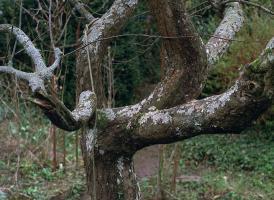
Norman Richter
HEIDELBERG
Doc. expérimental | 35mm | couleur | 34:40 | Allemagne | 2008
Chaque fois qu?il rend visite à sa grand-mère, l?auteur du film avance lentement dans la pièce et regarde ce qui a changé et ce qui n' a pas changé. A chaque fois, il va dans le jardin, en suivant le petit chemin jusqu'au bout de la montée; là, il se retourne et regarde la maison. Séquences tournées en Mars 2007.
Norman Richter est né en 1979. Il étudie la réalisation à l'HFF "Konrad Wolf" à Potsdam-Babelsberg. Il travaille sur les aspects expérimentaux et documentaires de l'art du film et de la vidéo. Il participe à des festivals de films et à des expositions dans le monde entier.
Catalogue : 2008Vali Asr - Juli 2006 | Doc. expérimental | 0 | couleur | 13:47 | Allemagne, Iran | 2007
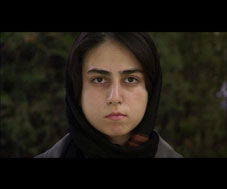
Norman Richter
Vali Asr - Juli 2006
Doc. expérimental | 0 | couleur | 13:47 | Allemagne, Iran | 2007
VALI ASR ? JUILLET 2006 Ce film a été tourné en sept jours durant l?été 2006, à Téhéran, capitale de la République islamique d?Iran. Le tournage se passe dans la rue Vali Asr, la plus longue et ancienne de Téhéran. Elle court sur 24 km, du nord au sud de la ville en passant par le centre et dévoile une image d?idéologies et de classes sociales très différentes. Le nom Vali Asr signifie « loi des temps » et se réfère à l?imam Muhammad al-Mahdi. En accord avec le dogme shiite, l?imam Mahdi est le vingtième et dernier successeur direct du prophète. Il est dit qu?il vécu pendant des siècles dans la clandestinité, sans donner de signes publics. La constitution de la République islamique d?Iran de 1979 désigna à la tête de l?état le vingtième Imam al-Mahdi. Les érudits islamiques, les Ayatollahs, ne sont que les représentants de l?Imam, attendant sa sortie de la clandestinité. Douze visages sont présentés. Un objet personnel est associé à chacune de ces douze personnes, excepté pour la dernière, une jeune fille. Ces personnes avaient ces objets avec eux au moment où ils ont été filmés.
Norman Richter was born in Heide in 1979. He has been studying directing at the "Konrad Wolf" Hochschule für Film und Fernsehen in Potsdam-Babelsberg. He works above all in the area of documentary and experimental film and video art. His film, "Sun in an Empty Room" was shown at the European Media Art Festival in Osnabrück along with "lobenden Erwähnung", from the German Filmkritik collective in the experimental film category. The film "Vali Asr - July 2006" filmed in Tehran was shown during the International Short Film Days in Oberhausen. Norman Richter's works have been exhibited in various international film and media art festivals, including: International Short Film Days, Oberhausen, 2007; European Media Art Festival, Osnabrück, 2005/2007; 25fps - International experimental Film and Video Festival, Zagreb, 2006; and the Ausstellung zum Marler Video-Kunst-Preis, 2006.
Julia Charlotte Richter
Catalogue : 2017You Are the Center of the World | Fiction expérimentale | 4k | couleur | 16:45 | Allemagne | 2015
Julia Charlotte Richter
You Are the Center of the World
Fiction expérimentale | 4k | couleur | 16:45 | Allemagne | 2015
“And all, all, all was nice and good” is the last sentence sung by a chorus of middle aged men that opens “You are the Center of the World”. A horse walks around, the hooves clatter in the courtyard of a pretty detached house. The three young men look around, wander through the deserted streets. Finally, they find themselves in a living room and remain in there. All they can do is wait and listen to the silence. Where are all the other people? Out there, something is wrong, for sure. The small town becomes a stage for the three local teenagers, who are looked at by the camera and „act acting“. Explicitly cinematic visual references are created, where the characters move and perform in.
Julia Charlotte Richter (*1982 in Gießen, Germany) is a video artist. She studied Fine Art in Kassel (Germany), Portsmouth (UK) and Braunschweig (Germany). Julia Charlotte Richter’s works have been shown internationally in numerous screenings and exhibitions, including Museum Folkwang Essen, Manege Moscow, Georgian National Museum Tbilisi, Goethe Institute Chicago, Toronto, Ankara etc., Filmfestival “Max-Ophüls- Preis” Saarbrücken and the “B3 Biennial of the Moving Image” Frankfurt. She received different scholarships such as the residency “Young Art in Essen” (Kunstring Folkwang/Kunsthaus Essen) in 2012 or a working grant by the Stiftung Kunstfonds in 2014. Her film “You are the Center of the World” (2015) was funded by the Bösenberg-Foundation. In 2017 she received a project grant by the Kunststiftung NRW as well as a travel grant by the Hessische Kulturstiftung.
Mykola Ridnyi
Catalogue : 2020No! No! No! | Doc. expérimental | hdv | couleur et n&b | 21:35 | Ukraine | 2017
Mykola Ridnyi
No! No! No!
Doc. expérimental | hdv | couleur et n&b | 21:35 | Ukraine | 2017
The main heroes of the film are the young people from Kharkiv, a city located in the Eastern part of Ukraine. Reaching their early twenties coincided with the breakout of the war in the neighbouring region of Donbass. An LGBT activist and poet, a fashion model, a group of street artists, a creator of a computer game – all of them are artists or working in the creative industries, typical for a peaceful life of a big city. However, the proximity to the war affects each of the characters and their activities. Heroes react and reflect political events through their specific relationships with the urban space and the reality of the social media.
Mykola Ridnyi was born 1985 in Kharkiv, Ukraine. Lives and works in Kyiv, Ukraine. He graduated in 2008 from the National Academy of design and arts in Kharkiv. In 2005 - 2012 he has working within the art collective SOSka group. Ridnyi works across media ranging from experimental films to site-specific installations. In recent films he experiments with nonlinear montage, collage of documentary and fiction. His way of reflection social and political reality draws on the contrast between fragility and resilience of individual stories and collective histories. He participated in a numerous international exhibitions and film festivals. Among them is 56-th Vienice biennale “All The World Future’s”, curated by Okwui Enwezor. His films and mixed media works are in the permanent public collections of Pinakothek der Moderne in Munich, Neuer Berliner Kunstverein, Ludwig Museum in Budapest, Museum of Modern Art in Warsaw, Arsenal City Gallery in Bialystok, V-A-C foundation in Moscow and others.
Mykola Ridnyi
Catalogue : 2025The Battle over Mazepa | Vidéo | 4k | couleur | 26:43 | Ukraine | 2023
Mykola Ridnyi
The Battle over Mazepa
Vidéo | 4k | couleur | 26:43 | Ukraine | 2023
The Battle Over Mazepa conceptualises the historical significance and contemporary perception of Ivan Mazepa, a political and military leader of the Zaporizhian Sich and Left-bank Ukraine in the late-17th and early-18th century. Addressing codes of hip-hop culture, Ridnyi borrows the popular form of a rap battle to collide two great works of world literature associated with this historical figure: Mazeppa by Lord Byron in 1819 and Poltava by Alexander Pushkin in 1828–29. While Byron envisions Mazepa as a romantic hero, seized by love, Pushkin portrays him as a traitor in accordance with the colonial attitude of the Russian Empire. Highlighting the confrontation of these two texts, Ridnyi invited four rappers from different national and cultural backgrounds to write and perform their response to the poets’ lyrics.
Mykola Ridnyi (born in Kharkiv, Ukraine) is an artist, filmmaker and educator. He lives and works in Berlin where he holds a guest professorship in the Lensbased class at the Berlin University of the Arts (UdK). His works reflect social and political realities by drawing on the contrast between fragility and resilience of individual stories and collective histories. The body of his work created within the last decade address the question of how to talk about violence and war but not multiply its brutality in the visual language. Ridnyi's works has been shown internationally including the Schinkel pavilion, Transmediale and DAAD gallery in Berlin, Albertinum in Dresden, Museum of Modern Art in Warsaw, Bonniers Konsthall in Stockholm, the 56-th Venice Biennale, The Kyiv Biennale and other venues and events.
Janet Riedel, Katja Pratschke, Gusztáv Hámos
Catalogue : 2011FIASKO | Fiction expérimentale | 35mm | | 30:0 | Allemagne | 2010
Janet Riedel, Katja Pratschke, Gusztáv Hámos
FIASKO
Fiction expérimentale | 35mm | | 30:0 | Allemagne | 2010
Photographic Essay based on the eponymous novel by Imre Kertész ? Steinig did survive his own death. Stranded at an unfamiliar nameless airport of a big though strangely familiar city, he is looking for a way to ensure his survival in a system which condemns everyone who has not yet lost faith in individuality and freedom.
Janet Riedel (1978) ist Fotografin und Grafikerin. Seit 2003 als freie Fotografin, Redakteurin und Herstellerin für Magazine (Du, corso), Werbeagenturen (JVM, Grabarz & Partner), Verlage (Carlsen, Rowohlt) und Theater (Kampnagel) tätig. Realisierung von Buch- und Ausstellungskonzepten. 2005 Gründung des Netzwerks für Neue Subjektive Fotografie ABSAGE AN DIE WIRKLICHKEIT; dreijährige Ausstellungstour durch Deutschland, nach Sydney, Hanoi. 2004?2007 Aufbaustudium für Visuelle Kommunikation/Medien an der HfBK Hamburg. 2008?2010 entstand der Fotoessayfilm FIASKO nach dem Roman von Imre Kertész in Zusammenarbeit mit Katja Pratschke/Gusztáv Hámos. Gusztáv Hámos (1955) und Katja Pratschke (1967)sind Medienkünstler. Ihre künstlerische Praxis umfasst Arbeiten mit Fotografie, Film, Video, Installation, interaktiven Skulpturen, wie auch die Kuration von Ausstellungen, Symposien, Filmreihen, und die Herausgabe von Publikationen. Aktuelle Ausstellungen und Projektionen: Tate Modern, Arsenal Berlin, Muzéum Ludwig Budapest, ZKM. Seit 2000 experimentieren sie mit dem Stillbild im kinematografischen Kontext - im Kino wie im Ausstellungsraum - untersuchen das Verhältnis von Stillstand und Bewegung. Seit 2006 kuratieren sie die Filmreihe VIVA FOTOFILM, die u.a. im Arsenal Berlin,in der Cinémathèque Quebeocoise Montreal, dem Múzeum Ludwig Budapest und der Tate Modern London zu sehen war. Parallel dazu initiierten und organisierten sie vier Symposien, dessen Ergebnisse in der Publikation »VIVA FOTOFILM bewegt/unbewegt«, 2010 veröffentlicht wurden.
Astrid Rieger, Zeljko VIDOVIC
Catalogue : 2007Apple on a tree | Art vidéo | dv | couleur | 4:50 | Allemagne | 2006
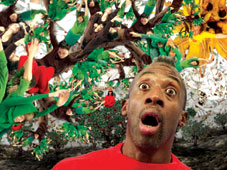
Astrid Rieger, Zeljko VIDOVIC
Apple on a tree
Art vidéo | dv | couleur | 4:50 | Allemagne | 2006
C'est une pomme sur un arbre, joyeusement accrochée en compagnie d'autres pommes, qui profite du soleil et de la caresse du vent. Cependant une pensée ne lui laisse aucun répit: elle aimerait savoir ce que c'est d'être un humain.
Astrid Rieger est née en 1979 à Kronstadt, Roumanie. Elle vit depuis 1990 en Allemagne. En 1999 elle commence ses études à la Hochschule für Gestaltung (école supérieure de design), option "communication visuelle" à Offenbach . Elle obtient son diplôme en 2006. Zeljko Vidovic est né en 1975 à Livno ? Croatie . Depuis 1998 il étudie à la Hochschule für Gestaltung (école supérieure de design) à Offenbach.
Lydia Rigaux
Catalogue : 2023The Other, can I lift the border? | Documentaire | digital | couleur et n&b | 29:0 | Belgique | 2023
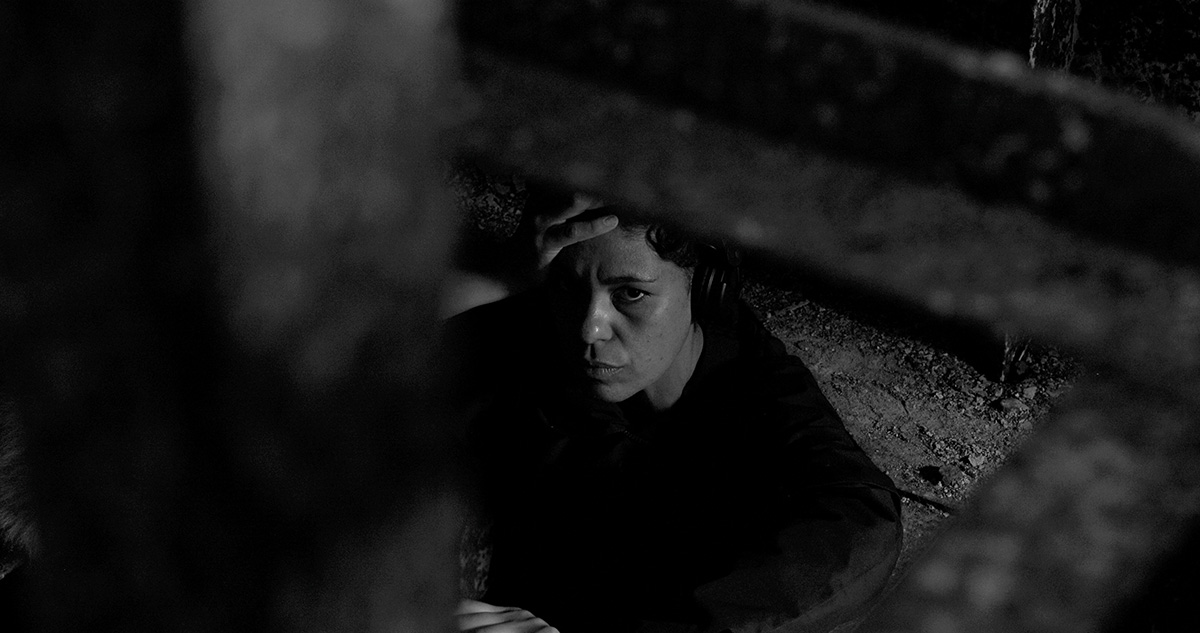
Lydia Rigaux
The Other, can I lift the border?
Documentaire | digital | couleur et n&b | 29:0 | Belgique | 2023
‘The Other, can I lift the border?’ is a hybrid documentary in which the filmmaker, Lydia Rigaux, and performer Luanda Casella explore how the perceived border between the self and the other can be lifted. During a fictional trip to Le Havre they reflect on the subject. In additional calls and talks we hear personal stories how the interviewees experience their relation towards others.
Lydia Rigaux (1980) is a filmmaker born and living in Ghent, Belgium. Her work navigates between fiction and documentary. An idea can develop from a story or reality. Yet during the process of making the film the line between those two becomes thinner. Fictional or real elements introduce themselves equipollent. The films she makes have tense subjects like trauma, marginalized communities, destruction, lethargy. But Lydia translates these topics in a poetic way, making them a visual experience that connects with the viewer.
Lydia Rigaux
Catalogue : 2018Hoe kamelen leeuwen worden (How Camels Become Lions) | Fiction | 4k | couleur | 61:0 | Belgique | 2017
Lydia Rigaux
Hoe kamelen leeuwen worden (How Camels Become Lions)
Fiction | 4k | couleur | 61:0 | Belgique | 2017
“ How camels become lions ” depicts the urge for freedom. Through 4 episodes we see 4 family members in a moment when they are tired of being a camel, as a beast of burden. They realise their tasks are meaningless and find themself in a spiritual desert. The camel wants to become a lion. A spirit that fights against the false values in order to find his own freedom. The title is based on “ Thus spoke Zarathustra ” by Friedrich Nietzsche. The character of Zarathustra confronts his audience with speeches. In his first speech he explains how you can become a free spirit through three transformations. The first stage is the one of the camel, willing to be controlled by others. During a second transformation, the camel becomes a lion, a rebel, who doesn’t allow anyone to tell him “ you shall ”. But, although the lion can react, he can’t create. For this, he needs to transform into a child. A child that thinks and acts independently of any structure. The characters of `How camels become lions` are in a transitional phase. Their state of discontent can be the beginning of a transformation to a lion, and who knows, afterwards, to a child.
Lydia Rigaux is a filmmaker born and living in Belgium. Her work navigates between fiction and documentary. An idea can start both from a fictional story or reality, yet during the process of making the film the line between those two becomes thinner due to the attempt to eliminate all false elements. Also the search of finding the “ right ” image to capture a situation or environment sweeps away that border. It appears to her that a certain moment or setting can only be captured in this one image, the “ right ” image. The dominance of this search controls the content and gives the film its own subject. In this way, the film creates its own reality.
Jessica Sarah Rinland
Catalogue : 2018Black Pond | Documentaire | 16mm | couleur et n&b | 43:0 | Argentine, Royaume-Uni | 2017
Jessica Sarah Rinland
Black Pond
Documentaire | 16mm | couleur et n&b | 43:0 | Argentine, Royaume-Uni | 2017
The film explores a common land in the south of England, and the natural history society who occupy it. After two years of filming, the rushes were shown to the society - their memories and responses were recorded and used as the film’s narration. The film does not give access to complete knowledge of the history of humans within the area. Instead, it explores more generally, human’s relationship with and within landscape and nature.
Argentine-British artist filmmaker, Jessica Sarah Rinland has exhibited work in galleries, cinemas, film festivals and universities internationally including New York Film Festival, BFI London Film Festival, Rotterdam, Oberhausen, Edinburgh International Film Festival and Bloomberg New Contemporaries. She has received grants from Arts Council England, Wellcome Trust, Elephant Trust and elsewhere. Residencies include MacDowell Colony, Kingston University, Locarno Academy and Berlinale Talents. Her most recent multi-screen, randomized installation We Account The Whale Immortal was exhibited at Somerset House, London in 2016.
Catalogue : 2015Adeline For Leaves | Film experimental | 16mm | couleur et n&b | 13:30 | Argentine | 2014
Jessica Sarah Rinland
Adeline For Leaves
Film experimental | 16mm | couleur et n&b | 13:30 | Argentine | 2014
Interrogating memory, horticultural, and philosophical elements through her endeavors, 11-year-old botanical prodigy Adeline’s mission is to propagate the mythical blue-flowering Echinopsis Subdenudata.
Argentinian/British filmmaker, Jessica Sarah Rinland has exhibited in galleries, cinemas, and film festivals internationally. Her short film NULEPSY screened at Bloomberg New Contemporaries, NYFF, LFF, IFFR, AAFF and was broadcast by Canal+. She won ICA’s Best Experimental Film for ELECTRIC OIL at LSFF 2013. She had a solo exhibition DISSECTING THE EXPLODING WHALE at LIMBO Arts in 2013. She was Filmmaker in Residence at Kingston University, UK and resident at the MacDowell Colony, US in 2014. Her short film ADELINE FOR LEAVES won the Arts + Science award at Ann Arbor Film Festival, also playing at Oberhausen, Edinburgh, New Horizons and Encounters. With funding from the Wellcome Trust, she co-curated a symposium on the subject of cetaceans at the National Maritime Museum, UK in September 2014.
Elli Rintala
Catalogue : 2009Väylä | Doc. expérimental | 16mm | couleur | 25:5 | Finlande | 2008

Elli Rintala
Väylä
Doc. expérimental | 16mm | couleur | 25:5 | Finlande | 2008
Un pétrolier navigue le long du golfe de Finlande. Après avoir vogué en haute mer, le navire change de cap pour une raffinerie de pétrole sur la côte. Lors de ce passage, l?homme, la technologie et la nature se confrontent les uns aux autres.
Elli Rintala est née en 1978. Elle étudie à l?Université des Arts et du Design d?Helsinki (Finlande) depuis 2004. Parmi ses récentes réalisations, citons notamment le documentaire « Eilisen eväät » (2005).
Simon Ripoll-hurier
Catalogue : 2025The Signal Line | Documentaire | dcp | couleur | 68:0 | France | 2024
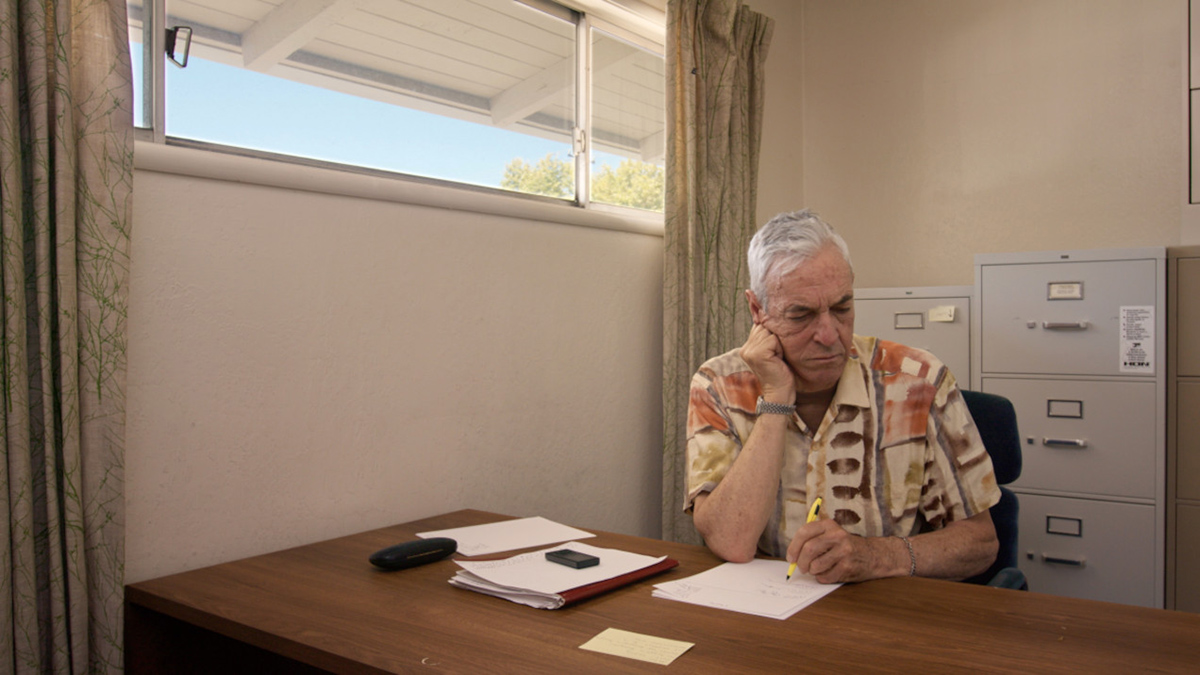
Simon Ripoll-hurier
The Signal Line
Documentaire | dcp | couleur | 68:0 | France | 2024
Some fifty years ago, while looking for new ways to gather intelligence, the CIA launched a secret program on clairvoyance and extrasensory perception. Is it any coincidence that this took place at the same time and in the same place as the birth of the Internet? Before our astonished eyes, well-trained individuals open up to invisible signals, and describe the contents of sealed envelopes (their “targets”) with astonishing acuity. Reproducing the protocol set up by a CIA agency during the Cold War, Simon Ripoll-Hurier and his co-writer Myriam Lefkowitz choose neighboring locations as the objects of these clairvoyance sessions, moving in concentric circles towards the seats of power in Silicon Valley. Two relationships to information collide: the archaic, corporeal and fallible method of remote viewers vs. the more or less legal collection of data and its storage in a cloud destined soon to replace the brain, itself scrutinized in a nearby lab. The mediums trained here are on the verge of obsolescence: with eyes closed, they let their hands drift across a sheet of paper, offering a poetic interpretation of their targets. The information they capture doesn't have the clarity of bits, and summons reality from an angle. When will our technologies be able to replace Loretta Mears, a chiropractor and healer who uses her intuition to visualize her patients' ailments and heal them better? Spurred on by a narrator who presents herself as an embodied “I”, The Signal Line sketches out the prospect of an information society that will leave no room for the mists of life. Yet wherever data comes from, it can be manipulated, and the film itself, through its editing, produces a reality that belongs to it alone. Tense between subjectivity and objectivity, it reminds us that the answer to any question depends on how it is formulated. (Text: Olivia Cooper-Hadjian)
Simon Ripoll-Hurier (b. Mont Saint-Aignan, 1985) is a graduate of the École des Beaux-Arts in Paris and Rouen, and holds a Master's degree in Arts and Politics from Sciences Po Paris. At the crossroads of music and the visual arts, his work revolves around the practices of listening and transmission through the voice. He is co-founder of *DUUU, an online radio station dedicated to contemporary creation. His work was presented at the Musée des Beaux-Arts in Rouen in 2009, at the Centre Pompidou-Metz in 2010, and at the Fabrique des arts in Carcassonne and the FID Marseille in 2017. His films will also be screened at Cinéma du réel 2020 and Rencontres internationales Paris/Berlin in 2021. Between 2014 and 2017, in Diana, he brought together various amateur practices linked by the question of listening (radio amateurs, birders, ghost hunters...). In 2020, he will portray a Macedonian symphony orchestra (Age of Heroes).
Catalogue : 2021Age of Heroes | Documentaire | hdv | couleur | 18:30 | France | 2020
Simon Ripoll-hurier
Age of Heroes
Documentaire | hdv | couleur | 18:30 | France | 2020
À l'est de Skopje se trouve une petite place tranquille, où l'on peut parfois entendre l’écho d'une musique orchestrale. Si vous suivez le son, il vous mène à un grand studio. Le "Film & Music Ensemble" (FAME’s project) de Skopje se spécialise dans la musique de film. Une centaine de musiciens, ingénieurs du son, et autres participants viennent tous les jours enregistrer des musiques du monde entier. Les compositeurs assistent généralement aux séances par visioconférence. En une seule journée, on peut passer d'une série télévisée française à une production de Bollywood. Suivant un mécanisme sans faille, l'orchestre produit en permanence de la musique pour accompagner les images et leur donner une tonalité émotionnelle. Sur la petite place qui jouxte ce grand studio, la vie suit son cours dans une indifférence tranquille.
Simon Ripoll-Hurier (né en 1985) travaille dans le champ des arts visuels et développe une pratique à la frontière entre la musique, la radio et le cinéma, traque les situations d'écoute. De 2014 à 2017, il a développé "Diana", un projet de recherche qui inclut film, vidéo, performance et radio. Il travaille actuellement sur un film reliant la Silicon Valley d'aujourd'hui aux expériences parapsychologiques menées autrefois par la CIA. Son travail a été présenté dans divers festivals, biennales, musées, galeries, et diffusé à la radio. Il joue également avec Les Agamemnonz, un groupe de surf music instrumentale, et a cofondé *DUUU, une webradio gérée par des artistes.
Sam Risley
Catalogue : 2023Coppice | Doc. expérimental | dcp | couleur et n&b | 32:42 | Royaume-Uni | 2022
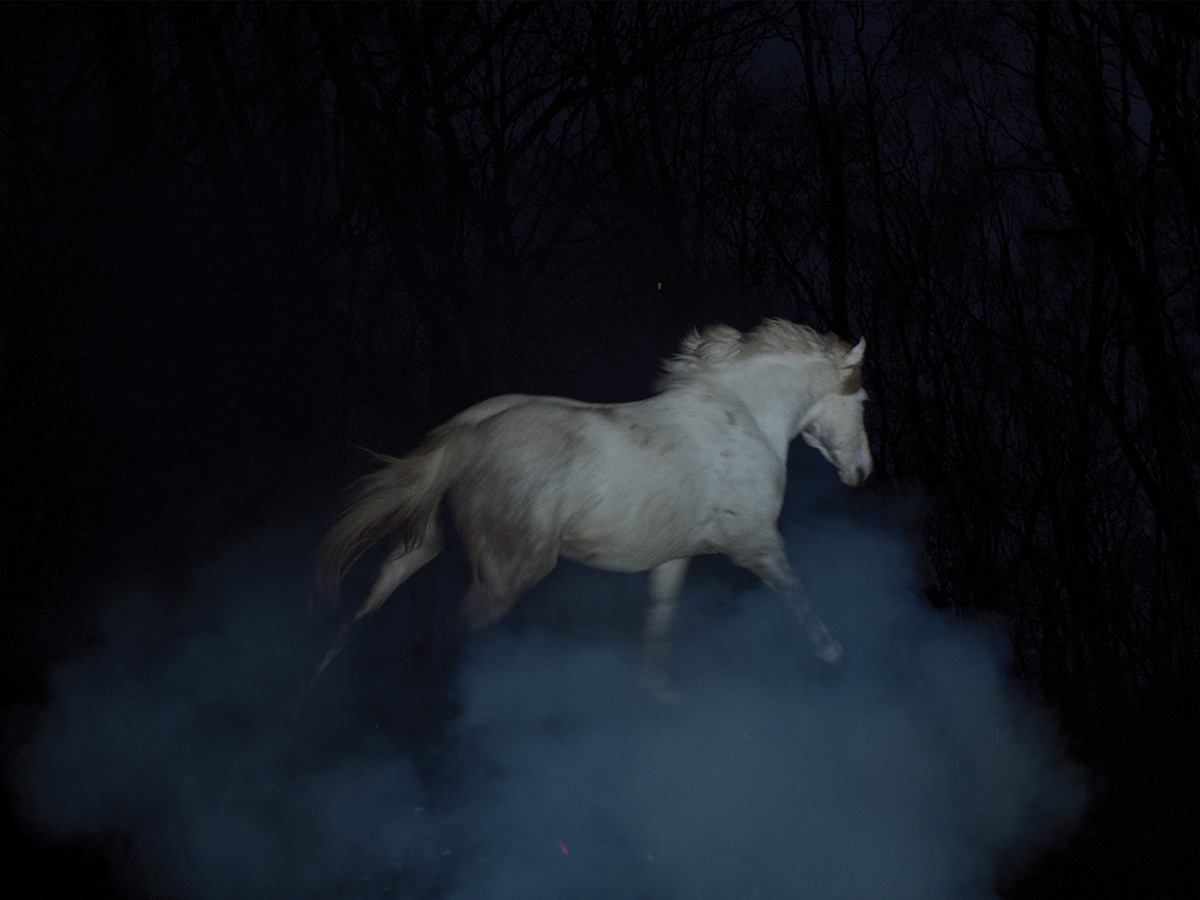
Sam Risley
Coppice
Doc. expérimental | dcp | couleur et n&b | 32:42 | Royaume-Uni | 2022
It is hard to picture the scale of the iron industry of the Weald today. A large amount of the violence inflicted upon the landscape has healed, only expressing its scars when you know what to look for. However, beginning in the early 16th century, vast quantities of iron were extracted from the area shaping the landscape, the human history and the nonhuman ecosystem to this day. Coppice (2022) is a film rooted in a feeling of psychic dislocation with land. This feeling lead Sam Risley to begin a practise of monthly visits to a small woodland called Cutaway Wood located within the Weald. What began as an attempt at re-enchantment, culminated in a film focused on the industrial history inscribed in the topography of the woodland. Coppice weaves together footage of a year spent watching Cutaway change with the seasons, with sounds captured both above and below the canopy, all the way down into the earth itself. The result is a film poem that conjures the ghosts of the landscape.
Sam Risley works across moving-image, installation, sculpture and written text. His work centres around narratives of renewal, with a focus on ecological restoration within landscapes shaped by violent capitalist practises. Friends, family and mythic or historical figures frequently populate his works. He has exhibited at The Baltic, The Horse Hospital, APT Gallery, Sluice Biennial, IMT Gallery and GAO Gallery among others and has had texts published by Ca-Foscari Press, Da Thirst and Morning Baby.
Dominik Ritszel
Catalogue : 2023Ziemia wch?onie to wszystko | Vidéo expérimentale | mp4 | couleur | 8:48 | Pologne | 2022
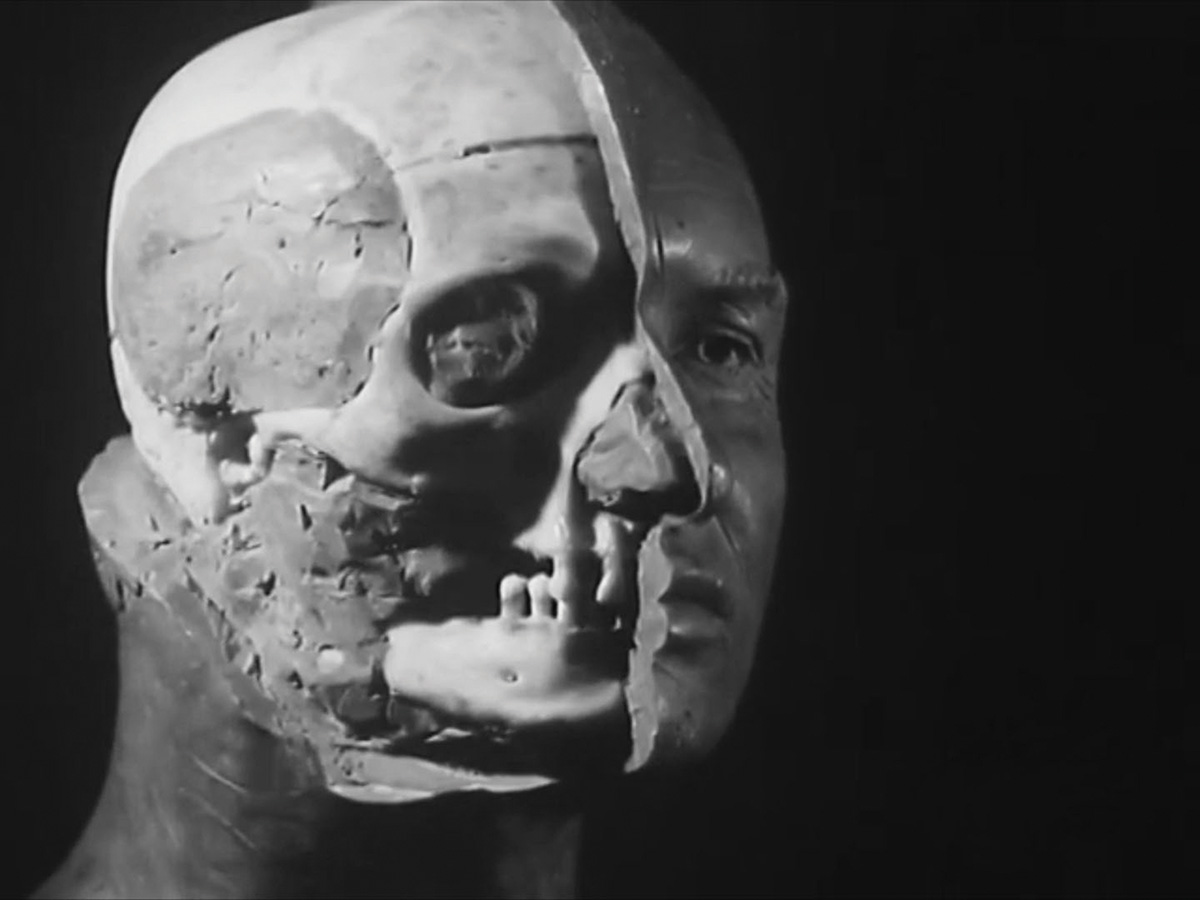
Dominik Ritszel
Ziemia wch?onie to wszystko
Vidéo expérimentale | mp4 | couleur | 8:48 | Pologne | 2022
The change of the political system that occurred in Poland in the early 1990s brought not only hopes related to the social and economic transformation, but also anxieties and fears. At the time, such fears were treated as evidence of incompatibility with the new capitalist order and thus consistently relegated to the margins of public debate. The film is an attempt to recall the traumatic experiences of this period. In this context, the concept of trauma is directly related to the process of repression, the essence of which coincides with the naturalizing, hegemonic discourse which justifies the social costs of transformation as necessary on the way to modernization. "The Earth Will Swallow it All" is a story about Upper Silesia. It was based on the accounts of mining families, the archives of the Polish Film Chronicle, 3D animations and seismographic charts. The collected materials connect into a description of the social catastrophe, which is shown from the perspective of people who in the past were united by the working-class community.
Dominik Ritszel (b. 1988) active in the area of visual arts. Working with film and video instalations. B.A. Graphics M.A. (2013), doctoral degree (2020) graduated at the Academy of Fine Arts in Katowice. Winner of the scholarship Young Poland, listed on the Forbes lists 30 Under 30 Europe, Prize winner of the Trieste Contemporanea Award 2015. Lives and works in Katowice, Poland.
Catalogue : 2022Studium postaci | Vidéo | mp4 | couleur | 7:46 | Pologne | 2020
Dominik Ritszel
Studium postaci
Vidéo | mp4 | couleur | 7:46 | Pologne | 2020
Figure Study is a video collage consisting of found footage and the artist's original recordings. It consists of a video installation, archival material and training videos filmed by the US government during the Cold War, as well as recordings of the Spartakiada, a mass sports competition organised in the Eastern Bloc during the period of Soviet domination. In his work, Dominik Ritszel manipulates the content of these materials by juxtaposing them with his own images, focusing on individual narrative elements as well as formal techniques. The issues raised in the work, ie. public safety, physical hygiene and a healthy lifestyle outline the political meanings attributed to the body, especially the male body. The figurative representations of unified military force and society as a mass aim to reveal the hidden content contained in the archival recordings and reconstruct a vision of patriarchal society.
(b. 1988) active in the area of visual arts. Working with film and video instalations. B.A. Graphics M.A. (2013) graduated at Academy of Fine Arts in Katowice, (2020) Doctoral degree in fine arts at Academy of Fine Arts in Katowice. Winner of the scholarship YOUNG POLAND (2014) and the Polish Ministry of Culture and National Heritage (2017). Prize winner of the Trieste Contemporanea Award 2015, Listed in Forbes magazine in category of Arts (2016). Lives and works in Katowice, Poland. Co-op with Szara Gallery in Warsaw.
Dominik Ritszel
Catalogue : 2016Pogłos | Vidéo | hdv | couleur | 14:30 | Pologne | 2015
Dominik Ritszel
Pogłos
Vidéo | hdv | couleur | 14:30 | Pologne | 2015
Ritszel in his movie Reverb cleans view of audial perception. He introduce the viewer to his laboratory, spread through whole city. Process of the civilization has been reverse and for a moment, receiver gain privilege of sharpen hearing,. Sounds act on the same rules as they act in horror movies. They grow from what is known. They grow stronger and stronger, minute after minute. They become powerful and than they spread. Dynamic of the horror movie shows, that what scarry the most are not perfectly design monsters but minor, accumulative sounds. Creak of slowly opening wordrobe doors,expending floor planks under footsteps, TV which swich on itself, scraping, grating, crashing, and the most, sudden, ominous, dead silent.
Dominik Ritszel was born in 1988 in Rybnik. He studied at the Faculty of Graphics in the Institute of Arts at the University of Silesia in Cieszyn and at the Academy of Fine Arts in Katowice, where he did graphic arts. His works were exhibited, among others, at international video art festivals Les Rencontres Internationales (Gaîté Lyrique, Palais de Tokyo, Paris), Proyector, International Video Art Festival (Spain, Italy, Portugal) and Video Art Review THE 02. He participated in group exhibitions - in the Show Off Section at the Krakow Photomonth Festival (2013), The increased Difficulty od Concretation in Prague (2015), What’s Hidden in National Gallery of Art (2015), Curators Network in the Museum of Contemporary Art (MOCAK) in Krakow (2012), Mum, I just really need to focus on my art right now in the Arsenał Gallery in Poznan (2012), among others, and in a joint exhibition presenting works of young Silesian artists Milk Teeth in the BWA Contemporary Art Gallery in Katowice (2013). He had individual exhibitions in the Centre for Contemporary Arts Kronika in Bytom, in Grey Gallery in Cieszyn, Grey House Gallery in Krakow and in the Silesian Museum in Katowice. He was chosen among the three finalists of the Talenty Trójki 2013 contest in the Visual Arts category, he was short-listed for the Grey House Foundation Prize. In 2014 he was granted the Young Poland Programme scholarship. In spring 2014 as an artist in residence he stayed in the A-I-R Laboratory in the Centre for Contemporary Art Ujazdowski Castle where he produced Versus, showed in Bank Pekao Project Room in Warsaw. In 2015 he participated in group exhibition Waiting for better times Curatorated by Magda Kardasz (Zachęta Project Room, Warsaw). During of the 8th edition of Biennale of Young Artists RYBIE OKO his video Reverb received special award. He has been crowned the 2015 winner of the Young European Artist Trieste Contemporanea Award. His next individual exhibition will take place in Studio Tomaseo (Italy) 26th of March.
Catalogue : 2015Film o szkole | Fiction expérimentale | hdv | couleur | 8:59 | Pologne | 2014
Dominik Ritszel
Film o szkole
Fiction expérimentale | hdv | couleur | 8:59 | Pologne | 2014
The video was recorded in primary school, which I graduated in 2003. This work is inspired by architectural elements in space of the school. I am mainly interested about functionality of certain spaces of the school, for example halls, passages, gyms, dressing room and also how institutional rules and statutes can take a form of game.
Dominik Ritszel was born in 1988 in Rybnik. He studied at the Faculty of Graphics in the Institute of Arts at the University of Silesia in Cieszyn and at the Academy of Fine Arts in Katowice, where he did graphic arts. His works were exhibited, among others, at international video art festivals Les Rencontres Internationales (Gaîté Lyrique, Palais de Tokyo, Paris) and Video Art Review THE 02 Spaces as a tool for shaping social attitudes. He participated in group exhibitions - in the Show Off Section at the Krakow Photomonth Festival (2013), Curators Network in the Museum of Contemporary Art (MOCAK) in Krakow (2012), Mum, I just really need to focus on my art right now in the Arsenał Gallery in Poznan (2012), among others, and in a joint exhibition presenting works of young Silesian artists Mleczne Zęby (Milk Teeth) in the BWA Contemporary Art Gallery in Katowice (2013). He had individual exhibitions in the Centre for Contemporary Arts Kronika in Bytom and in the Silesian Museum in Katowice. He was chosen among the three finalists of the Talenty Trójki 2013 contest in the Visual Arts category, he was short-listed for the Grey House Foundation Prize. In 2014 he was granted the Young Poland Programme scholarship. In spring 2014 as an artist in residence he stayed in the A-I-R Laboratory in the Centre for Contemporary Art Ujazdowski Castle where he produced Versus, showed in Ujazdowski Castle in Bank PEKO Project Room (Warsaw).
Catalogue : 2014Preludium | Vidéo | hdv | couleur | 7:57 | Pologne | 2013
Dominik Ritszel, Dominik Ritszel
Preludium
Vidéo | hdv | couleur | 7:57 | Pologne | 2013
Video explore the relations between son and father (student/master), which is bring to inconspicuous, childish game. Situation plays in family house, where actors are my father, brother and myself. ?Preludium? is a memoir of my request to my father, who refused to teach me play piano, saying, that is too late.
In 2008 I began study on Academy of Fine Arts in Katowice. My first individual exhibition ?See you all? took place in CSW Kronika in Bytom. In 2012 I took part in group exhibition; ?Whoever seen, whoever knows?, (CSW Kronika, Bytom). I was invited to take part in project ?Public space as tool for shaping social attitudes? in Chisinau (Moldova) where I made film ?Campers?. My second individual exhibition was in Częstochowa (Centrum Promocji Młodych); entitled ?No fun?. In collaboration with French curator Lore Gablier, I was co-create film ?D?eux?, based on two weeks traveling through France and England. I was chosen, as one of 20 polish artist, in polish edition of project Curators Network, which intend to promote selected artists by international group of curators in Poland and abroad. In 2013 I was participant in group exhibition young Silesian artists ?Milk Teeth? in BWA (Katowice) where I showed my film ?Preludium?. I was chosen, as one of 10 artist, in project Showoff?13. On behalf on project Showoff (cooperating with Photo Month in Krakow) I was showing my works in gallery Grey house Exhibition was entitled ?Eine kleine Werke?.
Dominik Ritszel
Catalogue : 2025The Body Dissolver | Doc. expérimental | 0 | couleur | 11:0 | Pologne | 2023
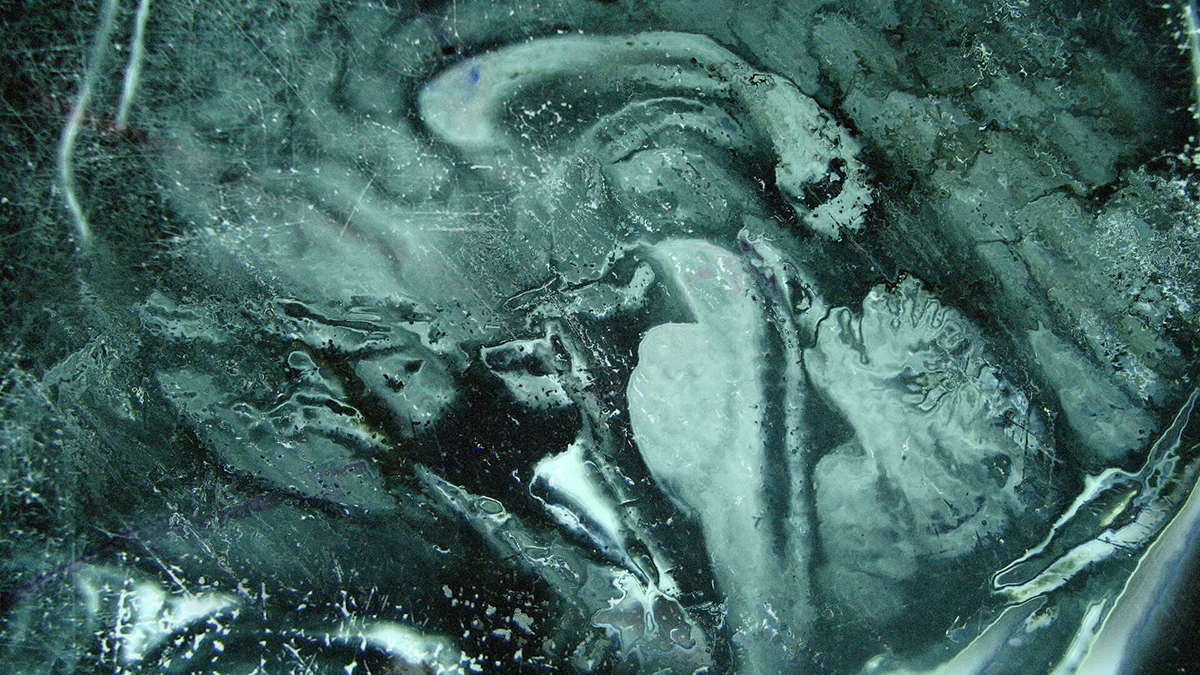
Dominik Ritszel
The Body Dissolver
Doc. expérimental | 0 | couleur | 11:0 | Pologne | 2023
“The Body Dissolver” is based on interviews with professional boxers recalling the moment they were knocked out. The Film combines documentary and fictional elements into a dense parafiction, tinted with body horror genre. Unreal 3D animations generated by the artist are confronted with found footage and the images of human bodies with the representations of imaginary, hyperbolic machines. The storyline reveals the recurring fantasies about the abandonment of the body and the visions of ecstasy, exploited in various spiritual discourses and pop-culture alike.
Dominik Ritszel was born in 1988. A visual artist who creates films, objects and video installations. In 2013, he graduated from the Academy of Fine Arts in Katowice at the Faculty of Workshop Graphics. In his works, he refers to phantasms and images of masculinity set in historical, cultural, and political contexts. His creations constitute a critical reflection on issues related to power, institutions and mechanisms of exclusion.
Dominik Ritszel, Dominik Ritszel
Catalogue : 2016Pogłos | Vidéo | hdv | couleur | 14:30 | Pologne | 2015
Dominik Ritszel
Pogłos
Vidéo | hdv | couleur | 14:30 | Pologne | 2015
Ritszel in his movie Reverb cleans view of audial perception. He introduce the viewer to his laboratory, spread through whole city. Process of the civilization has been reverse and for a moment, receiver gain privilege of sharpen hearing,. Sounds act on the same rules as they act in horror movies. They grow from what is known. They grow stronger and stronger, minute after minute. They become powerful and than they spread. Dynamic of the horror movie shows, that what scarry the most are not perfectly design monsters but minor, accumulative sounds. Creak of slowly opening wordrobe doors,expending floor planks under footsteps, TV which swich on itself, scraping, grating, crashing, and the most, sudden, ominous, dead silent.
Dominik Ritszel was born in 1988 in Rybnik. He studied at the Faculty of Graphics in the Institute of Arts at the University of Silesia in Cieszyn and at the Academy of Fine Arts in Katowice, where he did graphic arts. His works were exhibited, among others, at international video art festivals Les Rencontres Internationales (Gaîté Lyrique, Palais de Tokyo, Paris), Proyector, International Video Art Festival (Spain, Italy, Portugal) and Video Art Review THE 02. He participated in group exhibitions - in the Show Off Section at the Krakow Photomonth Festival (2013), The increased Difficulty od Concretation in Prague (2015), What’s Hidden in National Gallery of Art (2015), Curators Network in the Museum of Contemporary Art (MOCAK) in Krakow (2012), Mum, I just really need to focus on my art right now in the Arsenał Gallery in Poznan (2012), among others, and in a joint exhibition presenting works of young Silesian artists Milk Teeth in the BWA Contemporary Art Gallery in Katowice (2013). He had individual exhibitions in the Centre for Contemporary Arts Kronika in Bytom, in Grey Gallery in Cieszyn, Grey House Gallery in Krakow and in the Silesian Museum in Katowice. He was chosen among the three finalists of the Talenty Trójki 2013 contest in the Visual Arts category, he was short-listed for the Grey House Foundation Prize. In 2014 he was granted the Young Poland Programme scholarship. In spring 2014 as an artist in residence he stayed in the A-I-R Laboratory in the Centre for Contemporary Art Ujazdowski Castle where he produced Versus, showed in Bank Pekao Project Room in Warsaw. In 2015 he participated in group exhibition Waiting for better times Curatorated by Magda Kardasz (Zachęta Project Room, Warsaw). During of the 8th edition of Biennale of Young Artists RYBIE OKO his video Reverb received special award. He has been crowned the 2015 winner of the Young European Artist Trieste Contemporanea Award. His next individual exhibition will take place in Studio Tomaseo (Italy) 26th of March.
Catalogue : 2015Film o szkole | Fiction expérimentale | hdv | couleur | 8:59 | Pologne | 2014
Dominik Ritszel
Film o szkole
Fiction expérimentale | hdv | couleur | 8:59 | Pologne | 2014
The video was recorded in primary school, which I graduated in 2003. This work is inspired by architectural elements in space of the school. I am mainly interested about functionality of certain spaces of the school, for example halls, passages, gyms, dressing room and also how institutional rules and statutes can take a form of game.
Dominik Ritszel was born in 1988 in Rybnik. He studied at the Faculty of Graphics in the Institute of Arts at the University of Silesia in Cieszyn and at the Academy of Fine Arts in Katowice, where he did graphic arts. His works were exhibited, among others, at international video art festivals Les Rencontres Internationales (Gaîté Lyrique, Palais de Tokyo, Paris) and Video Art Review THE 02 Spaces as a tool for shaping social attitudes. He participated in group exhibitions - in the Show Off Section at the Krakow Photomonth Festival (2013), Curators Network in the Museum of Contemporary Art (MOCAK) in Krakow (2012), Mum, I just really need to focus on my art right now in the Arsenał Gallery in Poznan (2012), among others, and in a joint exhibition presenting works of young Silesian artists Mleczne Zęby (Milk Teeth) in the BWA Contemporary Art Gallery in Katowice (2013). He had individual exhibitions in the Centre for Contemporary Arts Kronika in Bytom and in the Silesian Museum in Katowice. He was chosen among the three finalists of the Talenty Trójki 2013 contest in the Visual Arts category, he was short-listed for the Grey House Foundation Prize. In 2014 he was granted the Young Poland Programme scholarship. In spring 2014 as an artist in residence he stayed in the A-I-R Laboratory in the Centre for Contemporary Art Ujazdowski Castle where he produced Versus, showed in Ujazdowski Castle in Bank PEKO Project Room (Warsaw).
Catalogue : 2014Preludium | Vidéo | hdv | couleur | 7:57 | Pologne | 2013
Dominik Ritszel, Dominik Ritszel
Preludium
Vidéo | hdv | couleur | 7:57 | Pologne | 2013
Video explore the relations between son and father (student/master), which is bring to inconspicuous, childish game. Situation plays in family house, where actors are my father, brother and myself. ?Preludium? is a memoir of my request to my father, who refused to teach me play piano, saying, that is too late.
In 2008 I began study on Academy of Fine Arts in Katowice. My first individual exhibition ?See you all? took place in CSW Kronika in Bytom. In 2012 I took part in group exhibition; ?Whoever seen, whoever knows?, (CSW Kronika, Bytom). I was invited to take part in project ?Public space as tool for shaping social attitudes? in Chisinau (Moldova) where I made film ?Campers?. My second individual exhibition was in Częstochowa (Centrum Promocji Młodych); entitled ?No fun?. In collaboration with French curator Lore Gablier, I was co-create film ?D?eux?, based on two weeks traveling through France and England. I was chosen, as one of 20 polish artist, in polish edition of project Curators Network, which intend to promote selected artists by international group of curators in Poland and abroad. In 2013 I was participant in group exhibition young Silesian artists ?Milk Teeth? in BWA (Katowice) where I showed my film ?Preludium?. I was chosen, as one of 10 artist, in project Showoff?13. On behalf on project Showoff (cooperating with Photo Month in Krakow) I was showing my works in gallery Grey house Exhibition was entitled ?Eine kleine Werke?.
Paul Ritt
Catalogue : 2015Connected | Vidéo | hdv | noir et blanc | 2:2 | Pays-Bas | 2014
Paul Ritt
Connected
Vidéo | hdv | noir et blanc | 2:2 | Pays-Bas | 2014
Connected,a video/drawing of a short journey through fragments of intuitive moments. The work is about following, exploring known/unknown directions, registering, leaving traces,emerging into patterns, maps of the free spirit.
Paul Ritt was born in the Netherlands (1957). He studied monumentale vormgeving at the Academie Beeldende Kunst, Maastricht, (1980-1984). He lived and worked in Australia from 1984 -1999. After studying for the Advanced diploma of Arts in Electronics, design and interactive media at the Royal Melbourne Institute of Technology Melbourne (1997-1998), he started making short films.
Esteban Rivera Ariza
Catalogue : 2016Die Versteinerten | Vidéo | hdv | couleur | 7:27 | Colombie, Allemagne | 2015
Esteban Rivera Ariza
Die Versteinerten
Vidéo | hdv | couleur | 7:27 | Colombie, Allemagne | 2015
An interview with David Stodolsky, member of the Cryonics Institute, who guides us trough the Building-Monument built over the previous house of Walter Gropius in Dessau, Germany. Renovated by Bruno Fioretti Marquez Architects in 2008, the construction reproduces the original volume of Gropius` house. In the film, the house works as a metaphor of what is fossilized. The idea of Modernism remains in this case in a fossil state, and survives in time as a trace of what once was. This video is part of a reflection on the act of conservation (of ideas, of bodies) as a human activity.
Esteban Rivera, Bogotá, Colombia (1981). He is finishing his Master studies in Art and Media in the Arts University in Berlin (Universität der Künste, Berlin) under Prof. Ai Weiwei and also as student of Prof. Anna Anders. He studied Graphic Design and a Master in Arts in the National University of Colombia (Universidad Nacional de Colombia). He makes films and videoinstallation and currently works in Berlin.
Jorge Rivero
Catalogue : 2010La presa | Doc. expérimental | 35mm | couleur | 20:0 | Espagne | 2009

Jorge Rivero
La presa
Doc. expérimental | 35mm | couleur | 20:0 | Espagne | 2009